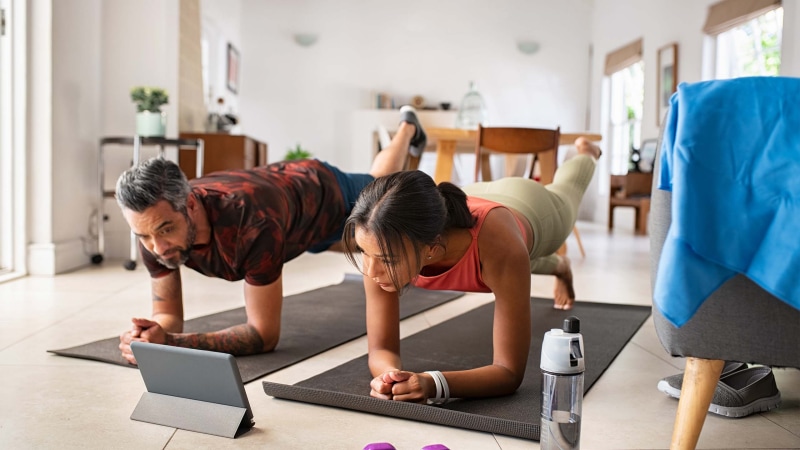The ultimate guide to (really) remote working

Experts have spoken about the benefits of remote working for years. But it took a once-in-a-century pandemic to finally turn remote working into an everyday reality. As the world scrambled into lockdown, just about anyone who could work remotely, did.
What does working remotely really mean, though? For most, it means working from home. It means back-to-back video calls while dodging the daily commute. For some, though, the opportunity to work remotely is a literal thing.
Why stay in one place when you are no longer bound by a commute? Enter the world of the digital nomad. A digital nomad is a remote worker who combines travel with work, potentially at various locations far from a physical office. With no more than a laptop and a reliable internet connection, remote working can transport the digital nomad to just about anywhere.
Guidance for working remotely
With many businesses continuing to allow employees some level of remote work even as pandemic restrictions lift, now could be the perfect opportunity to venture afar while you still have the chance.
But before you start packing up belongings and breaking your lease, let's consider a few practicalities. Take the time to:
- Check on your workplace policies. Are you sure you're okay to head for the open road? Nobody wants to pitch up in another state (let alone another country) to find out you're expected in the office Monday morning.
- Consider the time difference. Hawaii sounds great, but it might not be so fun if you're expected to join regular calls at 9:00 a.m. EST when you need to be there at 3:00 a.m. HST.
- Research visa requirements. If you're thinking of moving overseas, check into any visas you will need to apply for. Intriguingly, some countries have special visas for digital nomads.
- Figure out your travel plans. Give yourself time to organize how you're going to get to your destination smoothly and cost-effectively.
- Organize accommodation. Before you leave, make sure you have a living plan for at least the first few weeks of your stay.
- Plan for online access. Perhaps most important, define how you will ensure a steady internet connection that allows you to do your job remotely.
Of course, there are many other considerations to address before you commit to making a move, starting with where in the world you should go.
Options for the digital nomad
We've all heard that travel broadens the mind. But visiting a place for a vacation is different than living and working there — even temporarily. Think about such factors as
- Access to public transportation
- Cost of living
- Urban/rural mix
- Community safety
- Regional attractions
- Climate
The biggest consideration of all, though, is: What do you want to get out of the experience? Are you thinking big city or small town, inland or coastal? Will you seek out the company of fellow travelers or are you looking to immerse yourself in the local community? Might this be the beginnings of a permanent move elsewhere?
Whatever your motivations, you need to start your research somewhere. Here's a list of places around the United States and overseas where remote working is possible. While the list is just a sampler, hopefully, it will give you a window into the countless options out there. Let's start with some lesser-traveled regions of the United States:
Northeast
- Providence, RI: Enjoy the laidback vibe of this small city with proximity to Boston and New York. Explore the thriving arts scene, while nearby Newport is great for an upscale outing.
- Burlington, VT: Feel the breeze of Lake Champlain and embrace the convenience of one of the most wired cities around. With a bustling downtown and a host of outdoor attractions, here quality of life is second to none — despite the winter cold.
- Kennebunkport, ME: Savor the charms of a small coastal town with easy access to southern New England while the rest of Maine, from Portland and beyond, awaits you north.
Southeast
- Greenville, SC: With an attractive cost of living and a picture postcard downtown, it won't take long to fall in love with this small American city. Plus, you have the Blue Ridge Mountains at your doorstep.
- Marietta, GA: Want easy access to downtown Atlanta while enjoying a lower cost of living? Settle into life in this family-friendly town while benefiting from the flexibility of remote working.
- Clearwater, FL: With warm weather all year round, this city in the Tampa Bay area is more than white sand and sunshine. There are excellent restaurants and cultural venues to explore, along with an attractive cost of living.
Midwest
- Ames, IA: Benefit from excellent public transportation and get the most out of a collegiate environment while remote working.
- Sioux Falls, SD: Join the excitement of a small city that's bristling with life and easy on the pocketbook. The coffee's pretty good, too.
- Ann Arbor, MI: Innovation meets good living in a well-loved college town. If you decide to leave your remote working job while in town, there's a diverse job market to explore.
West Coast
- Seattle, WA: Great coffee, good music and (of course) rain. A Big Tech hub, the largest city in Washington state has a thriving nightlife and equally thriving jobs market. Just don't get too distracted while trying to work.
- Bend, OR: Nestled near the Cascade Mountains, this is a small artsy city that is dog-friendly and easy going. Might this be the staging post for you?
- Oxnard, CA: This pleasant seaside city offers a high quality of living, with proximity to Los Angeles and everything the City of Angels has to offer. Breathe in the Pacific air while exploring California's vast coast.
Europe
If you're eager for life outside the United States, consider Europe. With almost as many European countries as there are U.S. states, you'll be spoiled for choice when you venture beyond the typical grand tour. (Just remember to keep your HQ's time zone in mind!)
- Tallinn, Estonia: High-tech culture meets a highly educated population. Explore the neighboring Baltic States of Latvia and Lithuania while you're there.
- Ljubljana, Slovenia: This gem of a capital city is considered great for digital nomads. It enjoys reams of culture, good public transportation and excellent coffee. Now go find it on the map. (Hint: It's surprisingly close to Venice.)
- Lisbon, Portugal: There's something deeply charming about this European capital. With a dynamic start-up scene, might this be a place to drop your anchor while picking up some Portuguese along the way?
South America
North and South America might share the same landmass, but they remain separate continents in more ways than one. With the population of South America approaching half a billion, find the perfect locale for you.
- Lima, Peru: The Peruvian capital is packed with personality and teeming with districts to explore. The city's infrastructure is well developed, and the pace of life is relaxed. Machu Picchu beckons.
- Medellín, Colombia: This jewel of a city doubles as a mecca for digital nomads. The cost of living is low, and the weather is pleasant year-round.
- Florianópolis, Brazil: Fêted for its quality of life, and more manageable in size than Rio, this is a hotspot for remote working. Enjoy the lively mix of beaches and restaurants that grace this city of half a million people perched on the southern Atlantic Ocean.
Asia
If South America isn't far enough away, perhaps Asia is calling. Here are three places to kickstart your search:
- Kyoto, Japan: Beautiful scenery and a deep sense of reverence animate this ancient Japanese city. With a large student population and excellent transportation, there's no better place to start your Japanese adventure.
- Hanoi, Vietnam: This is a rich and complex city, with much to discover. It's also a great launching pad for exploring Vietnam and beyond.
- Chiang Mai, Thailand: Some say this is the ancestral home of the digital nomad. The climate is wonderful, the food is great and the cost of living is low.
Additional tips for working remotely
Once you've done your research and picked your place, the preparation has only just begun. Think about:
- Estimating your costs of relocation. How will you move your belongings to your new destination? Is a suitcase and a plane ticket really all you need?
- Researching any health requirements including immunizations and potential COVID restrictions, for overseas destinations. Explore your health and travel insurance options, too.
- Finding digital nomad communities active in your destination. Working remotely can feel isolating at times, so you may want to ask for advice or find some local residents to connect with. The best remote jobs still involve human interaction.
- Setting up your new home office for remote work. Make sure you have all the equipment you need to stay comfortably connected. Good remote workspaces don't just happen by themselves.
Ready to go?
You've done your research, made your decisions and gotten prepared for remote working. The clock is counting down. You're feeling brave and just a little apprehensive. You're about to turn the page on a new chapter in your life. Are you ready to embrace the adventure?



